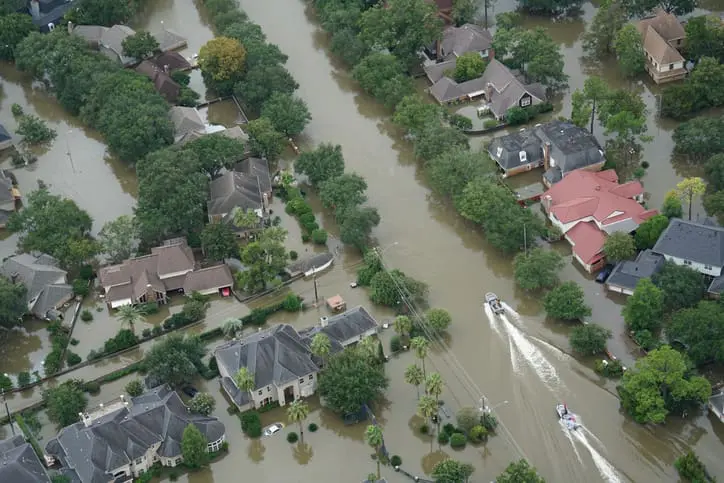If not you then who? The architect’s role in addressing climate risks
Text
Introduction
The architecture and design industry is at a critical juncture. Climate change poses escalating risks to the built environment and the people who occupy it, prompting the need for immediate, proactive, industry-wide action.
Integrating climate science into building science demands a significant shift in design thinking, particularly from architects as project leaders. Architects bear the important responsibility as licensed professionals to protect the public’s health, safety, and welfare. If architects aren’t considering future climate conditions when designing structures and communities, then who will?

The pushback
A common refrain from some design firms is, “We’re not climate scientists, and climate change impacts are far down the road.” This mindset, however, overlooks the immediate and growing risks to projects and the built environment. The increasing frequency and severity of natural disasters, such as the record-breaking events of 2023, are stark reminders that the future is now. The financial, social, and environmental costs of these events underscore the necessity for architects to marry climate science with building science.
Legal implications
From a professional liability standpoint, architects should know that simply following building codes may not be enough to shield them from liability in a climate-related lawsuit. When evaluating negligence, courts consider what design professionals knew or should have known about climate-related or weather-related risks on their projects at the time their services were provided. This stance turns traditional assumptions on their head as the concept of “non-stationarity”—where historical weather patterns can no longer predict future events—gains traction in legal circles. Simply adhering to existing standards may not suffice to avoid liability if those standards do not account for foreseeable climate impacts.
Bridging the gap
Transforming climate science into building science isn’t straightforward. There is no single reference point, and it requires connecting the dots between local climate projections and practical design decisions. Using climate modeling tools that can assess the vulnerability of project sites over the coming decades can be invaluable. Equally important is using professional judgment to recommend and implement resilience measures. Providing clients with the necessary information to make informed decisions about their investments in resilience is half the battle and can be particularly persuasive due diligence in a legal context.
Proactive design practices
Adopting a proactive approach to design involves staying informed through reliable sources like National Oceanic and Atmospheric Administration (NOAA) data, Intergovernmental Panel on Climate Change (IPCC) reports, reporting from the US Global Change Research Program, and climate modeling tools. Engaging clients in early discussions about climate risks and documenting these conversations may help protect against future claims of negligence and professional liability. Leading these discussions not only helps architects mitigate liability, but also positions them as forward-thinking professionals committed to resilient communities.
Conclusion
Architects can play a pivotal role in addressing the challenges of climate change. The time has come for integrating future climate conditions into design practices to safeguard projects and communities against escalating risks. Moving beyond standard practices and embracing a changing standard of care that anticipates and mitigates the impacts of climate change should be top of mind for design firms. Indeed, the future of the built environment and the people it houses depends on architects being proactive in this critical area because if it’s not you thinking and acting on future climate risks, then who?
Victor and CNA work with the AIA Trust to offer AIA members quality risk management coverage through the AIA Trust Professional Liability Insurance Program, Business Owners Program, and Cyber Liability Insurance program to insure your success and address the challenges that architects face today and in the future through their services and tools. Learn more about the advantages of being a Victor policyholder.



